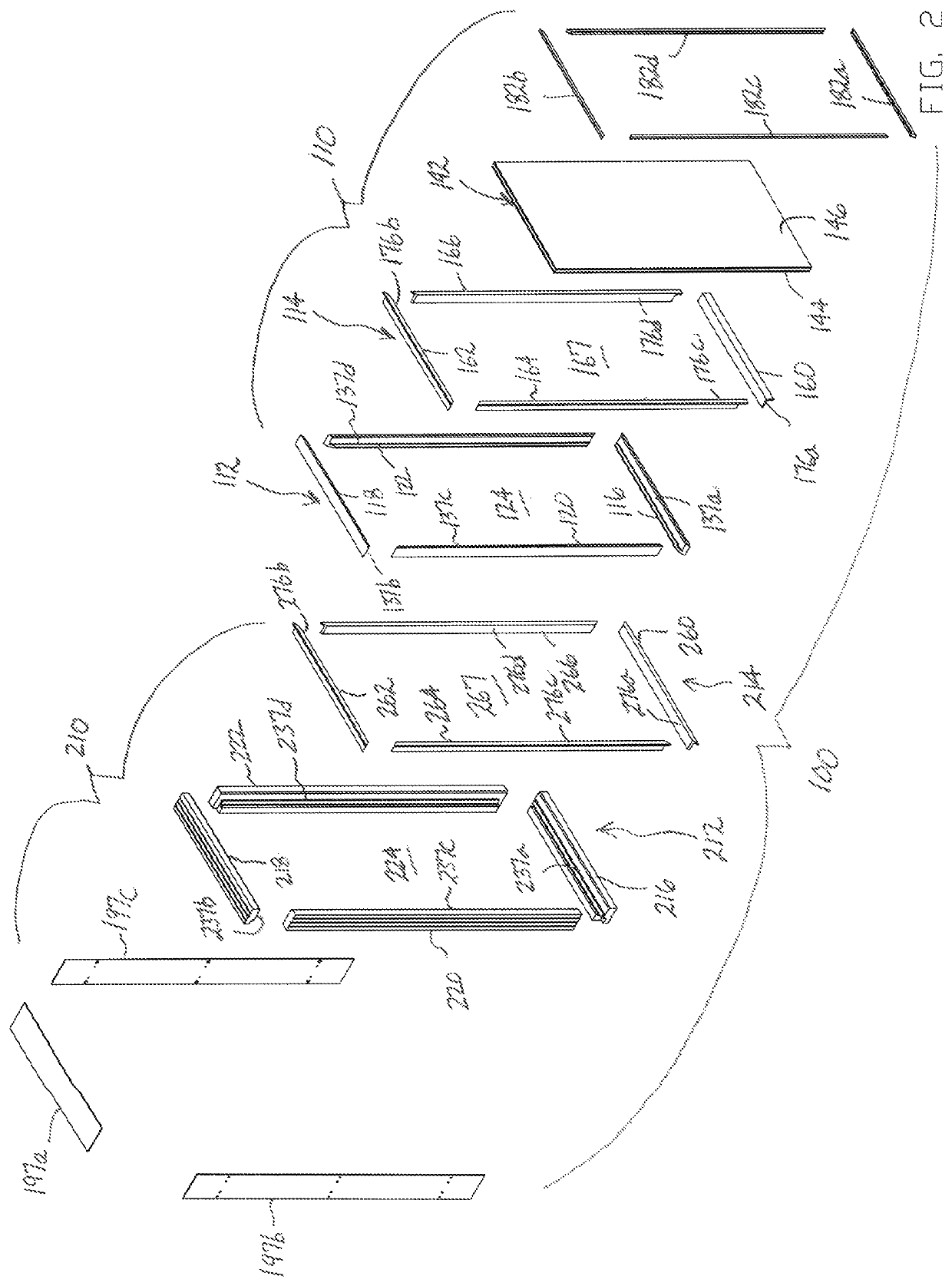Composite fenestration assembly
- Summary
- Abstract
- Description
- Claims
- Application Information
AI Technical Summary
Benefits of technology
Problems solved by technology
Method used
Image
Examples
Embodiment Construction
[0044]Exemplary Composite Fenestration Assembly (Outward Swing Casement Window): Referring initially to FIGS. 1A-6, a first exemplary embodiment of a composite fenestration assembly, generally designated 100, may be provided for installation in a rough opening 102 of a structure 104 and dividing an interior 106 from an exterior 108 while allowing light to pass therethrough. Such structure 104 may be any structure wherein a fenestration unit may be installed. For example, the composite fenestrations assemblies are most commonly used in residential and commercial buildings in both the interior and exterior regions. However, vehicles, aircraft, and nautical craft may also employ portals and other openings that may accommodate a composite fenestration assembly as described herein.
[0045]As defined in this disclosure, although the term fenestration was originally used as an architectural term for the arrangement of windows, doors and other glazed areas in a wall, the term has evolved to b...
PUM
| Property | Measurement | Unit |
|---|---|---|
| Angle | aaaaa | aaaaa |
| Length | aaaaa | aaaaa |
| Thermal properties | aaaaa | aaaaa |
Abstract
Description
Claims
Application Information
 Login to View More
Login to View More - R&D
- Intellectual Property
- Life Sciences
- Materials
- Tech Scout
- Unparalleled Data Quality
- Higher Quality Content
- 60% Fewer Hallucinations
Browse by: Latest US Patents, China's latest patents, Technical Efficacy Thesaurus, Application Domain, Technology Topic, Popular Technical Reports.
© 2025 PatSnap. All rights reserved.Legal|Privacy policy|Modern Slavery Act Transparency Statement|Sitemap|About US| Contact US: help@patsnap.com



